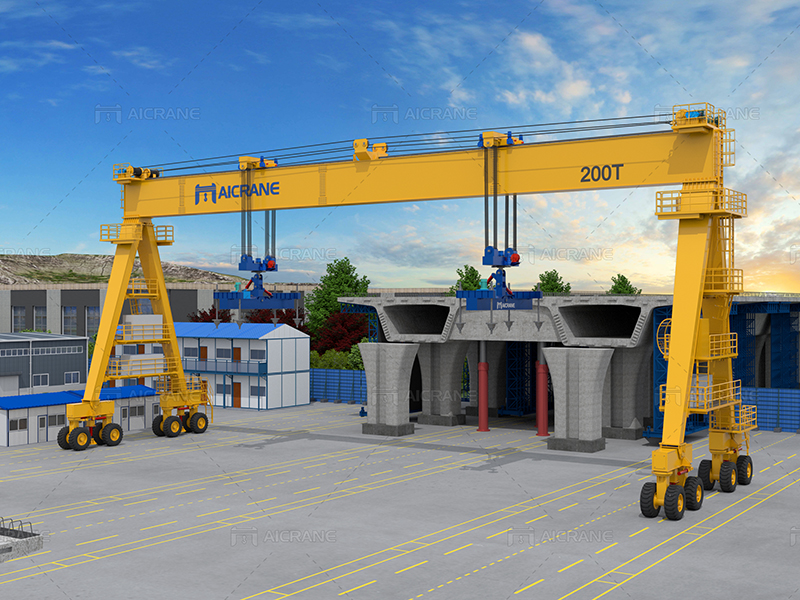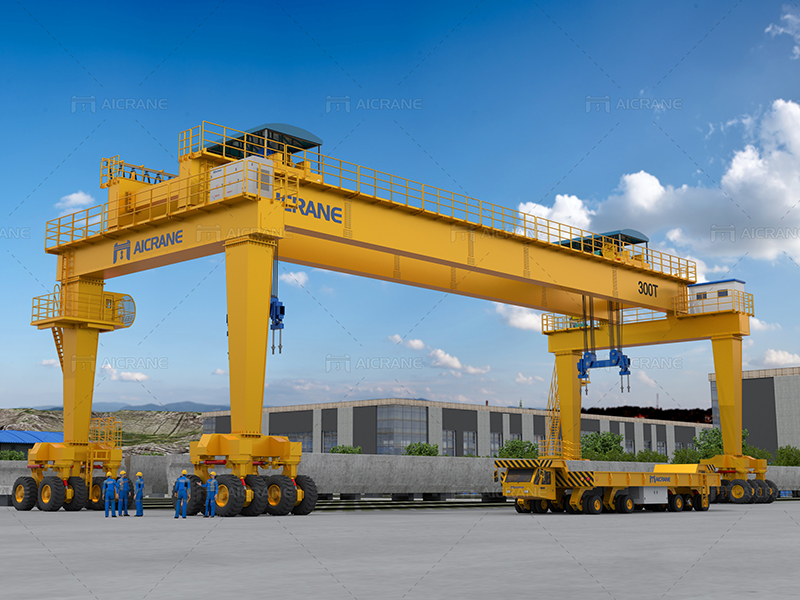Rubber-tyred gantry cranes (RTG cranes) play a crucial role in modern port operations, providing efficient container handling and storage solutions. When considering the acquisition of an RTG crane, one of the primary concerns for businesses is the cost involved. Understanding the factors that influence rubber-tyred gantry crane prices is essential for making informed decisions that align with operational needs and budget constraints.

Basic Components and Specifications
Before delving into the pricing details, it’s essential to understand the basic components and specifications of an RTG crane. These cranes are equipped with rubber tires for enhanced mobility and flexibility in container handling within the storage yard. Key specifications include lifting capacity, span, lifting height, and stacking capability, all of which contribute to the overall cost of the rubber tire crane.
Lifting Capacity
The lifting capacity of an RTG crane is a critical factor influencing its price. Different models offer varying lifting capacities, typically ranging from 30 to 100 tons or more. The higher the lifting capacity, the more robust the crane needs to be in terms of structural design, motor power, and control systems, leading to an increase in overall cost.
Span and Rail Gauge
The span of an RTG crane refers to the distance between the outer edges of the two gantry legs. A wider span provides greater coverage within the storage yard, allowing for more efficient container handling. Additionally, the rail gauge, or distance between the rails on which the crane moves, affects stability and load distribution. Both the span and rail gauge contribute to the crane’s overall size and play a role in determining its cost.
Lifting Height and Stack Containers
The lifting height of an RTG crane influences its ability to stack containers vertically. Higher lifting heights allow for more efficient use of storage space in container yards. However, increased lifting height requires a taller and more robust structure, as well as enhanced safety features, contributing to the overall cost of the crane.
Technology and Automation
Advancements in technology and automation have a significant impact on RTG crane prices. Modern cranes are equipped with sophisticated control systems, sensors, and automation features that enhance operational efficiency and safety. Automated stacking and retrieval systems, intelligent load management, and remote monitoring capabilities are among the technological advancements that can increase the cost of an RTG crane.

Environmental Considerations
In recent years, there has been a growing emphasis on environmental sustainability in port operations. Some straddle carriers are designed with eco-friendly features, such as energy-efficient motors, regenerative braking systems, and reduced noise emissions. While these environmentally friendly features contribute to a greener operation, they may also add to the upfront cost of the crane.
Manufacturer and Brand Reputation
The reputation of the manufacturer and the brand also play a crucial role in determining the price of an RTG crane. Well-established and reputable manufacturers are likely to produce high-quality cranes with better reliability and durability. While such cranes may come with a higher initial price tag, the long-term benefits in terms of reduced maintenance costs and increased operational uptime can justify the investment.
Customization and Optional Features
The ability to customize an RTG crane to specific operational requirements can impact its price. Businesses may have unique needs that require additional features or modifications to standard crane configurations. Optional features such as specialized spreaders, lighting systems, and operator cabins with advanced ergonomics can contribute to the overall cost but may be essential for optimizing operational efficiency.
Conclusion
In conclusion, the rubber tyred gantry crane price is influenced by a combination of factors, including lifting capacity, span, lifting height, technology, environmental considerations, manufacturer reputation, and customization options. Understanding these factors and their impact on cost is crucial for businesses looking to invest in an RTG crane that aligns with their operational needs and budget constraints.
When evaluating different options, it’s essential for businesses to conduct a thorough analysis of their specific requirements and weigh the upfront cost against the long-term benefits and operational efficiencies that the chosen RTG crane can provide. By making informed decisions, businesses can ensure that their investment in a rubber-tyred gantry crane contributes to the overall success and productivity of their port operations.